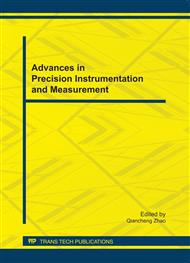p.9
p.15
p.20
p.25
p.30
p.35
p.41
p.46
p.51
An Evaluation Method of Roundness Error Based on Artificial Bee Colony Algorithm
Abstract:
The roundness error is an important index of mechanical part and its interchangeability, it is the key to quality of product. A new method for calculating the roundness error based on artificial bee colony algorithm has been proposed in this paper. Artificial bee colony algorithm is an evolutionary computation. It has the character of simple technique, easy digital realization and few controlling parameters. Firstly, the basic principle of artificial bee colony algorithm is concisely introduced in this paper. The detailed steps for calculating the roundness error based on artificial bee colony algorithm have been described. Finally experiment results are given. These results have shown that the proposed method can correctly and effectively evaluate roundness error. The proposed method can overcome the local convergence in evaluation of roundness error based on least square method (LSM).
Info:
Periodical:
Pages:
30-34
Citation:
Online since:
September 2011
Authors:
Price:
Сopyright:
© 2012 Trans Tech Publications Ltd. All Rights Reserved
Share:
Citation:


